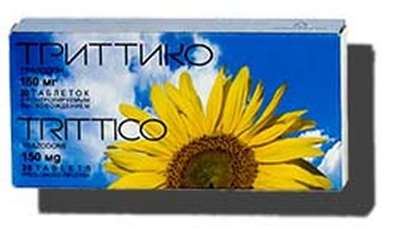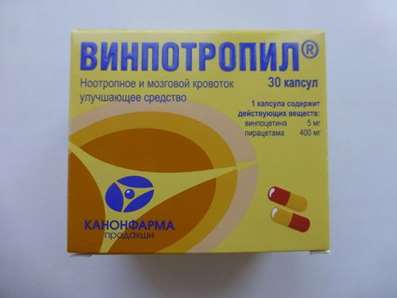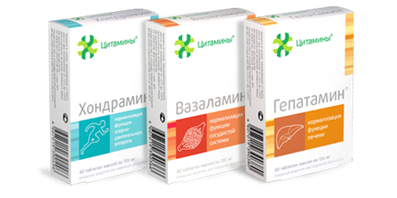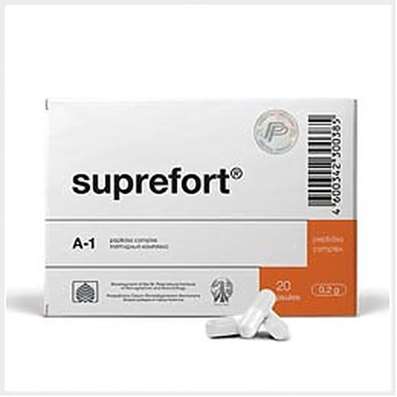Instruction for use: Ketospray
I want this, give me price
Active substance Ketoprofen
ATX code M02AA10 Ketoprofen
Pharmacological group
NSAIDs - Propionic acid derivatives
Nosological classification (ICD-10)
I80.0 Phlebitis and thrombophlebitis of superficial vessels of lower extremities
Thrombophlebitis of superficial veins, Thrombophlebitis of superficial veins of legs, Thrombophlebitis of superficial veins, Phlebitis of superficial veins of legs, Inflammation of veins
I89.1 Lymphangitis
Lymphangitis, Lymphagitis, Lymphangitis acute
M79.0 Other unspecified rheumatism
Degenerative rheumatic disease, Degenerative and rheumatic diseases of the tendons, Degenerative rheumatic diseases, Localized forms of rheumatism of soft tissues, Rheumatism, Rheumatism with a pronounced allergic component, Rheumatism of the articular and extraarticular, Rheumatic attack, Rheumatic complaints, Rheumatic diseases, Rheumatic disease of the spine, Relapses of rheumatism, Articular and extra-articular rheumatism, Articular and muscular rheumatism, Articular rheumatism, Articular syndrome with rheumatism, Chronic rheumatic pain, Chronic articular rheumatism, Rheumatoid diseases, Rheumatic diseases of the intervertebral disc
M79.9 Disease of soft tissue, unspecified
Localized forms of inflammation of soft tissues
T14.9 Injury unspecified
Pain syndrome after trauma, Pain syndrome with injuries, Pain syndrome with trauma and after surgery, Pain in case of injury, Pain of a traumatic nature, Joint pain with injuries, Postoperative and post-traumatic pain, Pain in case of injury, Pain of a traumatic origin, Severe pain syndrome of traumatic origin, Deep tissue damage, Deep scratches on the trunk, Closed injury, Minor Household Injuries, Minor skin damage, Violations of the integrity of soft tissues, Uncomplicated trauma, Extensive traumatic injury, Acute pain syndrome of traumatic origin, Edema with trauma, Postponed sports injuries, Post-traumatic pain, Soft tissue injuries, Joint wounds, Sports injuries, Injury, Traumatic pain, Traumatic pains, Traumatic infiltrate,Injuries to sports
Z100 * CLASS XXII Surgical practice
Abdominal surgery, adenomectomy, Amputation, Coronary angioplasty, Angioplasty of the carotid arteries, Antiseptic skin treatment for wounds, Antiseptic Hand, Appendectomy, atherectomy, Balloon coronary angioplasty, Vaginal hysterectomy, The coronary bypass, Interventions in the vagina and cervix, Interventions on the bladder, Intervention in the mouth, Restoration and reconstructive surgery, Hand hygiene of medical personnel, Gynecologic surgery, Gynecological intervention, Gynecological surgery, Hypovolemic shock during operations, Disinfection of purulent wounds, Disinfection of wounds edges, Diagnostic intervention, Diagnostic procedures, Cervical Diathermocoagulation, Long-surgery, Replacing the fistula catheters, Infection in orthopedic surgery, Artificial heart valve, cystectomy, Short-term outpatient surgery, Short-term operation, Short surgical procedures, Krikotireotomiya, Blood loss during surgery, Bleeding during surgery and in the postoperative period, Kuldotsentez, laser photocoagulation, laser coagulation, retinal laser coagulation, Laparoscopy, Laparoscopy in Gynecology, CSF fistula, Small gynecological operations, Small surgical procedures, Mastectomy and subsequent plastic, mediastinotomy, Microsurgical operations on the ear, Mukogingivalnye operation, suturing, Minor surgery, neurosurgical operation, Immobilization of the eyeball in ophthalmic surgery, testectomy, pancreatectomy, Perikardektomiya, The period of rehabilitation after surgery, The period of, convalescence after surgery, Percutaneous transluminal coronary angioplasty, Pleural thoracentesis, Pneumonia postoperative and posttraumatic, Preparation for surgical procedures, Preparation for surgery, Preparation of the surgeon's hands before surgery, Preparation of the colon for surgical procedures, Postoperative aspiration pneumonia in neurosurgical and thoracic surgery, Postoperative nausea, Postoperative bleeding, postoperative granuloma, postoperative shock, The early postoperative period, myocardial revascularization, Radiectomy, gastric Resection, bowel resection, uterine Resection, liver Resection, enterectomy, Resection of part of the stomach, Reocclusion of the operated vessel, Bonding tissues during surgical procedures, Removal of sutures, Condition after eye surgery, Condition after surgery, Condition after surgery in the nasal cavity, Condition after gastrectomy, Status after resection of the small intestine, Condition after tonsillectomy, Condition after removal of the duodenum, Condition after phlebectomy, Vascular surgery, Splenectomy, Sterilization of surgical instruments, Sterilization of surgical instruments, sternotomy, Dental surgery, Dental intervention in periodontal tissues, strumectomy, Tonsillectomy, Thoracic surgery, total gastrectomy, Transdermal intravascular coronary angioplasty, Transurethral resection, Turbinektomiya, Removal of a tooth, cataract surgery, Removal of cysts, tonsillectomy, Removal of fibroids, Removing the mobile primary teeth, Removing polyps, Removing broken tooth, Removal of the uterus body, Removal of sutures, Urethrotomy, Fistula likvoroprovodyaschih ways, Frontoetmoidogaymorotomiya, Surgical infection, Surgical treatment of chronic limb ulcersm, Surgery, The surgery in the anal area, The surgery on the colon, Surgical practice, The surgical procedure, Surgical interventions, Surgery on the gastrointestinal tract, Surgical procedures on the urinary tract, Surgical procedures on the urinary system, Surgical intervention of the genitourinary system, Surgical procedures on the heart, Surgical manipulation, surgery, Surgery on the veins, Surgical intervention, Vascular surgery, Surgical treatment of thrombosis, cholecystectomy, Partial gastric resection, transabdominal hysterectomy, Percutaneous transluminal coronary angioplasty, Percutaneous transluminal angioplasty, Coronary artery bypass, tooth Extirpation, Extirpation of milk teeth, pulpectomy, pulsative cardiopulmonary bypass, tooth Extraction, teeth Extraction, cataract extraction, Electrocoagulation, endourological intervention, episiotomy, Etmoidotomiya, Complications after tooth extraction
Composition and form of release
Spray for external use dosed 10% 1 g
ketoprofen 100 mg *
auxiliary substances: propylene glycol - 100 mg; isopropanol 80 mg; NAT 8539 - 100 mg (lecithin soybean 76% - 75 mg, ethanol anhydrous 96% - 25 mg); sodium dihydrogen phosphate dihydrate 2.5 mg; sodium hydrophosphate - 5.7 mg; sodium hydroxide - 15.5 mg; peppermint oil - 1.5 mg; purified water - 594.8 ml
* With one push on the pump, 0.2 g of 10% of the drug is released, which corresponds to 20 mg of ketoprofen.
in vials of brown glass type III, a screw tip closed with a mechanical pump spray, 15 ml (12.5 g - 62.5 dose) or 30 ml (25 g - 125 doses); in a pack of cardboard 1 bottle.
pharmachologic effect
Pharmacological action - anti-inflammatory, analgesic.
Pharmacodynamics
Ketoprofen - NSAID, a derivative of propionic acid, has an anti-inflammatory and analgesic effect.
Ketoprofen inhibits COX activity, which contributes to a decrease in production in the tissues of PG such as PGF2α and PGE2. Ketoprofen inhibits leukocyte migration, stabilizes lysosomal membranes, reduces cytokine release.
Pharmacokinetics
After applying the drug on the skin, it is slowly absorbed by it. Accumulation in soft tissues is moderate. The level of ketoprofen in the plasma after 16-25 times its application is less than 132 ng / ml ± 71 ng / ml.
Bioavailability of the drug is 99%.
The results of pharmacokinetic studies have shown that the concentration of ketoprofen in the plasma does not reach the level necessary for the development of systemic adverse reactions.
The corresponding toxicological tests of the dosage form of the spray for external use of the Ketospray preparation and the whole range of methods for assessing ketoprofen did not reveal any toxic manifestations in the proposed method of use of the preparation. It is obvious that this dosage form for topical administration does not have any toxic effects, and the systemic concentration of the drug, when properly applied, does not reach the toxic level. In addition, in a special study, a good local tolerance of this drug form was confirmed.
Excretion: ketoprofen is excreted by the kidneys in the form of glucuronide.
Indications
traumatic injuries (bruising, stretching) of muscles, ligaments, joints, incl. sports;
condition of tissues after surgery with signs of edema and inflammation;
inflammation of the soft tissues of the musculoskeletal system and spine (including periarthritis, tendonitis, bursitis);
inflammation due to degenerative diseases of the musculoskeletal system (rheumatoid arthritis, osteoarthritis, osteochondrosis);
inflammation of veins, lymphatic vessels and nodes (thrombophlebitis of superficial veins, lymphangitis).
Contraindications
hypersensitivity to the active ingredient of the drug ketoprofen or excipients included in the drug, acetylsalicylic acid, or other NSAIDs;
skin allergic reaction to ketoprofen, tiaprotefenic acid, hypocholesterolemic drugs (fenofibrates), creams "from the sun", perfumes;
skin damage - dermatoses, eczema, ulcers, infected abrasions and skin wound;
children's age till 15 years.
pregnancy and lactation
The use of the drug during pregnancy and breastfeeding is undesirable.
Side effects
Adverse effects of the drug are associated with a violation of the dosing regimen:
From the skin: erythema, itching, local hyperthermia.
Allergic reactions: from the skin - photosensitivity;
respiratory system - an asthmatic attack is possible, especially in patients with hypersensitivity to acetylsalicylic acid and other NSAIDs. In very rare cases, a more serious reaction to the drug is possible - anaphylactic shock.
When the skin is damaged, the duration of the drug and its dosage, reactions from the gastrointestinal tract and kidneys are possible.
The frequency of cases of undesirable side effects is distributed as follows:
infrequently (1 / 100-1 / 1000) from the skin - erythema, itching, eczema;
rarely (1 / 1000-1 / 10000) from the skin - photosensitivity, bladder eczema, urticaria;
very rarely (<1/10000) from the side of the immune system - urogenital angioedema.
A case of chronic kidney failure and several cases of anaphylactic reactions to the drug are described.
Interaction
Interaction with other drugs is unlikely, since the serum ketoprofen concentration after external use is low. Interaction is observed in the case of high doses of methotrexate with NSAIDs, including ketoprofen, with oral administration of NSAIDs.
Dosing and Administration
Outwardly. Adult - in the absence of other medical recommendations - from 3 to 6 skin sprays 2-3 times a day, widely applying a spray to the damaged surface and around it, gently massaging the skin until the drug is completely absorbed.
During the day, not> 18 sprays are permissible, i.e. not> 360 mg of ketoprofen.
Do not exceed the indicated dose.
(The recommended duration of the drug is no more than 7 days).
Elderly - there are no special recommendations for use and dosage.
Children older than 15 years - the dosing regimen is the same as for adults.
With one push on the pump, 0.2 g ± 10% of the drug is released, which corresponds to 20 mg of ketoprofen.
Overdose
Overdose is unlikely if the recommended dosage regimen is observed.
In case of local overdose, the drug is washed off with water.
special instructions
During the application of the drug and in the next 2 weeks it is recommended to cover the treated skin areas with clothing so as to avoid direct sunlight and UV radiation from the solarium.
After applying the product, you should thoroughly wash your hands. In the event of any reaction from the skin, the treatment of this area should be immediately discontinued.
The spray should not get on the mucous membranes (mouth, genitalia, anal area), as well as in the eyes and ears.
Prolonged use of the drug reduces the synthesis of PG.
Ketospray does not affect the patient's ability to engage in potentially hazardous activities.
storage conditions
At a temperature of no higher than 25 ° C.
Keep out of the reach of children.
Shelf life
3 years.
Do not use after the expiry date printed on the package.

 Cart
Cart





